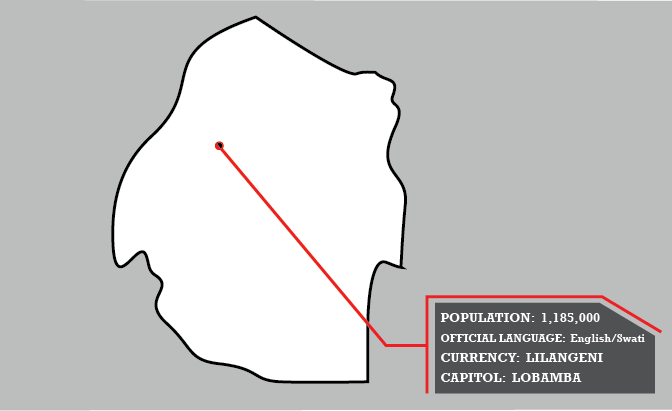Swaziland

COUNTRY PROFILE
Swaziland, Africa, is nestled between the nations of South Africa and Mozambique. It is the Southern Hemisphere's smallest country and home to just more than 1 million people. With an area of about 6,500 sq mi, on a map, Swaziland appears as but a tiny drop in the expanse of southern Africa. But small, as the cliché goes, is beautiful—especially in Swaziland's case. To overlook this landlocked little nation would be to miss experiencing a rich traditional culture, abundant exotic wildlife, and wonderfully varied and picturesque terrains.
The area that is now called Swaziland was settled by Swazi tribesmen in the early 1800s, and it was named after the king at the time, Mswati II. The British took control of the land in 1903 after the second Boer War and ruled until independence in 1968 (Swaziland was the last British protectorate in Africa). In 1973, the Swazi king set aside the constitution and assumed full power. Today, King Mswati III is Africa's last absolute monarch, ruling under a constitution that places all power in his hands.
Thanks to its sugar plantations, much of Swaziland's revenue comes from Coca-Cola, which has a large bottling plant there that supplies much of southern Africa.
In Swaziland, the number of cattle a person controls determines thier wealth. For marriage, a man must pay lobola (bride price—usually consisting of a certain number of cattle) to the father of the bride.
After Botswana, Swaziland has the second-highest HIV/AIDS rate in the world, with almost 40% of the population infected. Life expectancy in the mid-1990s was 51 years, but today it has dropped to a mere 39 years as a direct result of the pandemic. This is among the lowest life expectancy rates in the world.
Polygamy is still common in Swaziland. In fact, King Mswati III has 13 wives and 23 children to date. His late father King Sobhuza II, who died in 1982, had more than 70 wives and fathered 210 children between 1920 and 1970.
DATES
Call for custom dates.
AGE REQUIRMENT
13 and up



